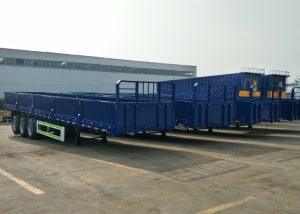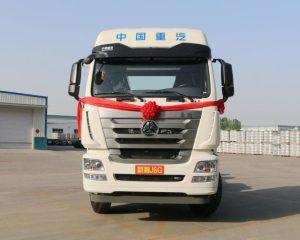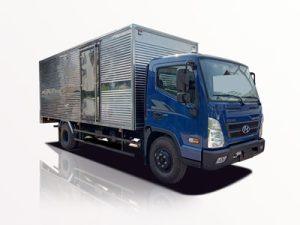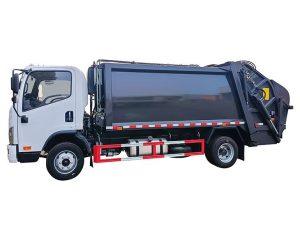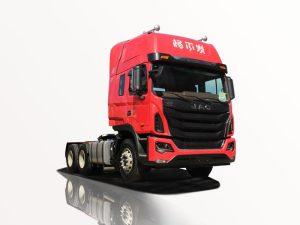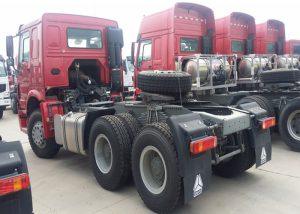Monday to Saturday - 8:00 -17:30
Understanding Platform Fire Trucks: Essential Equipment for Modern Firefighters
In the realm of firefighting, the tools and technology available have evolved dramatically, ensuring that firefighters can respond to emergencies efficiently and safely. Among these advancements is the platform fire truck, a vital piece of equipment that enhances aerial firefighting capabilities. This article will delve into the intricacies of platform fire trucks, exploring their features, benefits, and essential role in modern firefighting operations.
What is a Platform Fire Truck?
A platform fire truck, commonly referred to as an aerial platform or ladder truck, is specialized firefighting apparatus equipped with a hydraulically operated aerial device that can extend and elevate to reach high places. These vehicles are designed for specific operations, including high-rise rescues, accessing difficult locations, and performing firefighting tasks from elevated positions.
Key Components of a Platform Fire Truck
Understanding the main components of a platform fire truck is essential to grasp its operation and significance. Here are some critical parts:
- Aerial Ladder/Platform: This is the primary component that extends upwards, enabling firefighters to reach greater heights safely.
- Water Pump: Platform fire trucks are typically equipped with powerful water pumps to enhance firefighting capabilities directly from the elevated position.
- Stabilizers: These help secure the vehicle during operation, ensuring stability when the ladder is extended.
- Control System: Modern platform fire trucks have advanced control systems that allow precise maneuvering of the ladder and platform.
- Storage Compartments: These hold firefighting equipment, hoses, and rescue gear, facilitating quick access when needed.
Types of Platform Fire Trucks
Platform fire trucks come in various types, each designed for specific firefighting needs. Here are the main categories:
Rotating Platform Fire Trucks
These trucks feature a rotating platform that can turn in a full circle, providing 360-degree access to the operational area. They are ideal for urban areas where multi-directional access is needed.
Telescopic Fire Trucks
Telescopic platforms can extend vertically and are ideal for reaching high buildings. Their extendable reach makes them invaluable in large structures.
Articulated Fire Trucks
Articulated platforms have joints that allow the ladder to bend, making it easier to navigate around obstacles like adjacent buildings, trees, or power lines. This is particularly useful in densely built environments.
The Importance of Platform Fire Trucks in Firefighting
Platform fire trucks play a vital role in ensuring effective firefighting operations. Their importance can be observed in several key areas:
Enhanced Access
The primary advantage of platform fire trucks is their ability to reach high areas, such as the upper floors of skyscrapers. Traditional fire engines typically struggle to access these heights, but platform trucks bridge that gap.
Increased Safety
Firefighters can operate safely from an elevated platform, minimizing the risks associated with climbing ladders. The platforms can also accommodate multiple firefighters and their equipment, providing a secure working environment during emergencies.
Effective Emergency Response
In case of fires in high-rise buildings or complex incidents, platform fire trucks can provide immediate firefighting response from above. Depending on the incident, platforms can also be used for rescue operations, helping to evacuate individuals trapped on upper floors.
Multi-Purpose Utility
Beyond firefighting, platform fire trucks can be utilized for various purposes, such as conducting search and rescue missions, performing maintenance on tall structures, or managing crowd control during events.
Factors to Consider When Choosing a Platform Fire Truck
Selecting the right platform fire truck for a fire department is a significant decision that can affect operational efficiency. Here are crucial factors to evaluate:
Height and Reach
Different buildings and incidents may require varying ladder lengths. It is essential to choose a platform truck that offers adequate reach based on the types of structures in the community.
Weight Capacity
The weight capacity of the aerial device must be assessed to ensure it can safely support the firefighters, equipment, and water supply necessary for operation.
Stability and Maneuverability
Consider the vehicle’s stability when extended, especially in urban environments where narrow streets and other obstacles can make maneuvering the truck challenging.
Maintenance and Reliability
Regular maintenance is essential for ensuring the operational reliability of platform fire trucks. Choose models that are known for their durability and easy serviceability.
Training Requirements for Operating Platform Fire Trucks
Proper training for firefighters operating platform fire trucks is crucial, as their use requires specific skills and knowledge. Here are some core training components:
Operational Training
Firefighters must receive comprehensive training on operating the hydraulic systems, ladder controls, and safety protocols associated with the platform fire truck.
Emergency Response Drills
Conducting regular drills simulating real emergency situations is essential. This practice helps firefighters become proficient in using the platform for rescues and firefighting.
Safety Protocols
Training should include safety measures for both firefighters and civilians. Understanding weight limits, securing equipment, and maintaining a safe distance from hazards are crucial components.
Case Studies of Successful Platform Fire Truck Deployments
Example 1: High-Rise Fire in Miami
In a significant high-rise fire in Miami, a platform fire truck successfully reached the 30th floor to combat the blaze. Firefighters were able to deploy from the aerial platform with water hoses and rescue equipment, allowing them to extinguish the fire while ensuring the safety of stranded residents.
Example 2: Rescue Operation in Tokyo
During a natural disaster in Tokyo, several individuals were trapped in skyscrapers. The platform fire truck was deployed, providing a safe means to evacuate individuals through upper windows while also administering first aid from the aerial platform.
Maintenance Best Practices for Platform Fire Trucks
Daily Checks
Before deployment, conduct daily checks on fluid levels, ladder functions, and stabilizers. Ensuring that all systems are working correctly can prevent operational failures during emergencies.
Regular Servicing
Scheduel regular servicing based on manufacturer recommendations, which typically includes inspections of hydraulic systems, electrical systems, and mechanical components.
Training on Maintenance
Have trained personnel responsible for regular maintenance and educate all firefighters on basic operational checks they can perform daily.
Future Trends in Platform Fire Truck Technology
As technology advances, platform fire trucks are likely to see significant innovations. Here are a few trends that may influence the future of platform fire trucks:
Integration of Drones
Drones may be employed alongside platform fire trucks for reconnaissance purposes, providing aerial views of the fire situation before decision-making occurs.
Electric and Hybrid Models
With a push for green technology, electric and hybrid platform fire trucks could become more prevalent, offering reduced emissions and lower operational costs over time.
Advanced Durability Features
Improvements in materials and engineering may lead to more durable and lightweight platform designs, enhancing their stability and extendability without adding excessive weight.
FAQs about Platform Fire Trucks
What is the difference between a platform fire truck and a standard fire engine?
A platform fire truck is equipped with an aerial device that allows firefighters to reach heights that standard fire engines cannot. While standard fire engines focus on water delivery, platform trucks provide additional aerial access for fighting fires and conducting rescues.
How high can a platform fire truck reach?
The reach of a platform fire truck varies significantly based on the model, but most can extend anywhere from 75 to over 100 feet. Some specialized models can reach heights of up to 150 feet or more.
What safety features are common in platform fire trucks?
Common safety features include stabilizers that secure the vehicle, automatic braking systems, alarms for overloading, and fail-safety systems that prevent the ladder from operating in unsafe conditions.
How often are platform fire trucks used in firefighting operations?
Usage frequency varies by location and community needs, but in urban areas with high-rise buildings, platform fire trucks are often dispatched on most structure fire calls to ensure that aerial access is available for firefighting and rescue operations.
What training is necessary for firefighters operating platform fire trucks?
Firefighters must undergo specialized training in operating the ladder, understanding hydraulic systems, safety protocols, and emergency response techniques necessary for high-altitude firefighting and rescues.
Can platform fire trucks be used for rescue missions outside of firefighting?
Yes, platform fire trucks are versatile tools that can be utilized for rescue missions during natural disasters, crowd management during large events, and other emergency situations requiring elevated access.



